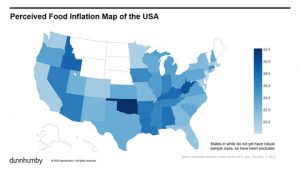 The Biden-Harris Administration is investing $59 million across the country to increase independent meat and poultry processing capacity, expand market opportunities for farmers and create jobs in rural areas.
The Biden-Harris Administration is investing $59 million across the country to increase independent meat and poultry processing capacity, expand market opportunities for farmers and create jobs in rural areas.
The investments support the Biden-Harris Administration’s Action Plan for a Fairer, More Competitive, and More Resilient Meat and Poultry Supply Chain, which dedicates resources to expand independent processing capacity. As President Biden has highlighted, creating fairer markets and more opportunities for family farmers helps bring down prices at the grocery store.
“For too long, American farmers and ranchers have been asked to produce more to meet increasing demand across the country and around the world, while they and the rural communities they come from have struggled to see their fair share of the benefits,” U.S. Department of Agriculture Secretary Tom Vilsack said.
“The Biden-Harris Administration and USDA are taking action to advance a sustainable vision of agriculture that prioritizes the needs of our resilient producers and small businesses, strengthens our food supply chain and brings value back to rural people and places. Through investments like those I’m announcing today, USDA will continue to work tirelessly to give farmers and ranchers a fair chance to compete in the marketplace, which in turn helps lower food costs for the American people.”
Vilsack announced the new investments while touring a processing facility in Harrisonburg, Va., that will be expanded with the funding. Vilsack and Deputy Secretary Jewel Bronaugh visited with local producers and members of the community to discuss the importance of these investments to the region’s economy.
USDA is providing the $59 million in grants to five independent processors under the Meat and Poultry Processing Expansion Program. The funding will help build new processing plants, create hundreds of jobs, give local producers and entrepreneurs more options and business opportunities, and give consumers more options at the grocery store.
In Virginia, Shenandoah Valley Organic LLC is receiving a $3.6 million grant to expand its organic chicken processing facility in Harrisonburg to meet increasing demand. The grant will be used for equipment purchases, new conveyor lines, building and site modifications, and a new wastewater treatment system. The improvements will help the facility alleviate processing bottlenecks and nearly double its processing capacity to 630,000 birds per week. These investments will create 300 jobs and enable Shenandoah Valley to provide more processing options and choices for customers.
In Idaho, Riverbend Meats LLC is receiving a $25 million grant to help build an environmentally friendly beef processing plant in Idaho Falls. The funding also will be used for custom equipment and installation of nine miles of mainline gas pipe. The project is expected to double the plant’s capacity from 300 head per day to 600, increasing the price ranchers receive for their cattle and lowering costs for consumers.
In South Dakota, CNF Enterprises LLC is receiving a $3.3 million grant to help build a 30,000-square-foot processing facility in New Underwood. The facility will have the capacity to process 4,000 head per year, including beef, pork, lamb and buffalo. CNF Enterprises is a new company that was formed to help meet the increasing demand for high-quality, locally sourced meat products.
Through the American Rescue Plan, the Bipartisan Infrastructure Law, and the Inflation Reduction Act, the Biden-Harris Administration has made once-in-a-generation investments in rural America. These investments have provided USDA with an unprecedented amount of resources to invest in rural communities and transform our food system.
In November, USDA awarded $75 million to 22 projects under MPPEP. In January, USDA awarded an additional $12 million to three more MPPEP projects. The program is one of many actions that USDA is taking to expand processing capacity, create more revenue streams and market opportunities for producers, and transform the nation’s food system.
Additional information on all these programs is available at www.usda.gov/meat.
Under the Biden-Harris Administration, Rural Development provides loans, grants and loan guarantees to help expand economic opportunities, create jobs and improve the quality of life for millions of Americans in rural areas. This assistance supports infrastructure improvements; business development; housing; community facilities such as schools, public safety and health care; and high-speed internet access in rural, Tribal and high-poverty areas. For more information, visit www.rd.usda.gov.
For more news of interest to the meat and poultry industry, subscribe to Gourmet News.

